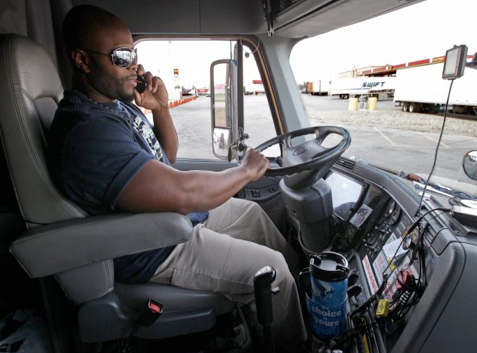
- A salesperson for Coca-Cola was driving a company car and talking on her cell phone when she got into an accident, injuring a 37-year-old woman. The injured woman sued Coca-Cola and a Texas jury awarded her $21 million (USD).
- A driver on a cell phone in a company car didn’t react when traffic slowed, rear-ending a Honda in a chain-reaction that killed a 32-year-old woman. A jury awarded her family $21.6 million (USD).
- A federal magistrate ordered an Alabama trucking company to pay $18 million (USD) for an accident that happened when one of its drivers reached for a cell phone.
- International Paper settled for $5.2 million (USD) after an employee on a cell phone caused a collision that cost a woman her arm.
THE PROBLEM
What do the above recent cases have in common’ They involve companies being held liable for distracted driving accidents caused by their employees. Yes, all of the cases occurred in the US. But distracted driving is just as big of a problem in Canada. And it’s only a matter of time before Canadian courts start seeing similar lawsuits. So it’s critical for the company to take appropriate steps to address distracted driving by workers. If the company doesn’t and a distracted worker injures or kills someone while behind the wheel, it could face serious financial consequences.
THE EXPLANATION
When it comes to workplace safety, many companies focus on the OHS laws and their requirements and that’s all. And the OHS laws don’t identify the use of cell phones by workers as a workplace hazard. (Exception: Sec. 503 of Alberta’s OHS Code 2009 restricts the use of cell phones near electric detonators used in blasting operations.) So employers aren’t specifically required to bar worker cell phone use and distracted driving as part of their OHS programs.
But remember, every jurisdiction’s OHS law has a “general duty” clause that requires employers to take steps to ensure the health and safety of workers. A key component of this general duty is eliminating and controlling foreseeable hazards. So if distracted driving is a foreseeable hazard workers may face, the company must take steps to address the danger.
In addition, there are other laws that could impose liability on employers for accidents caused by their workers, distracted driving. For example, almost all of Canada has traffic laws barring the use of handheld cell phones and other electronic devices while driving. So workers who talk or text while driving are in violation of those laws and thus could be considered negligent if they cause an accident while doing so. And under a legal theory called “vicarious liability”, a civil court could hold an employer responsible for acts of negligence by workers acting within the scope of their employment. Thus, if a worker has a distracted driving accident while on the job and causes property damage or personal injury, his employer could be held liable.
THE LESSON
Senior management is responsible for ensuring the company protects workers from injury and that the company itself is protected from the risk of liability for distracted driving by workers. Some of the steps you should ensure the company takes include:
> Implementing a distracted driving policy that bars workers from using their cell phones or other electronic devices while driving company vehicles or on the job. But an unclear policy that isn’t enforced will only hurt the company. For example, in the Texas case, Coca-Cola’s lawyers argued that its company cell phone use policy, which required the use of a hands-free device when operating a motor vehicle, was consistent with and, in fact, exceeded the requirements in Texas law. But the plaintiff successfully argued that its policy was “vague and ambiguous” and wasn’t enforced in any way. So ensure that the company’s policy is clear and comprehensive and that it’s consistent with any distracted driving bans in the jurisdiction’s traffic laws;
> Training workers on this policy as well as the dangers of distracted driving. For example, in the Texas case, the injured woman’s lawyers noted that although Coca-Cola had information on the dangers of using a cell phone while driving, it didn’t share that information with workers; and
> Enforcing the policy. A distracted driving policy is only a paper tiger if the company never disciplines workers who violate it. So it’s critical that you ensure that the policy is enforced and violators are appropriately disciplined.
CELL PHONES & OTHER ELECTRONICS COMPLIANCE CENTRE
For more information on addressing distracted driving and other safety issues involving electronic devices, such as iPods, go to the Cell Phones & Other Electronics Compliance Centre, where you’ll find, among other things, a Model Distracted Driving Policy.


Leave A Comment